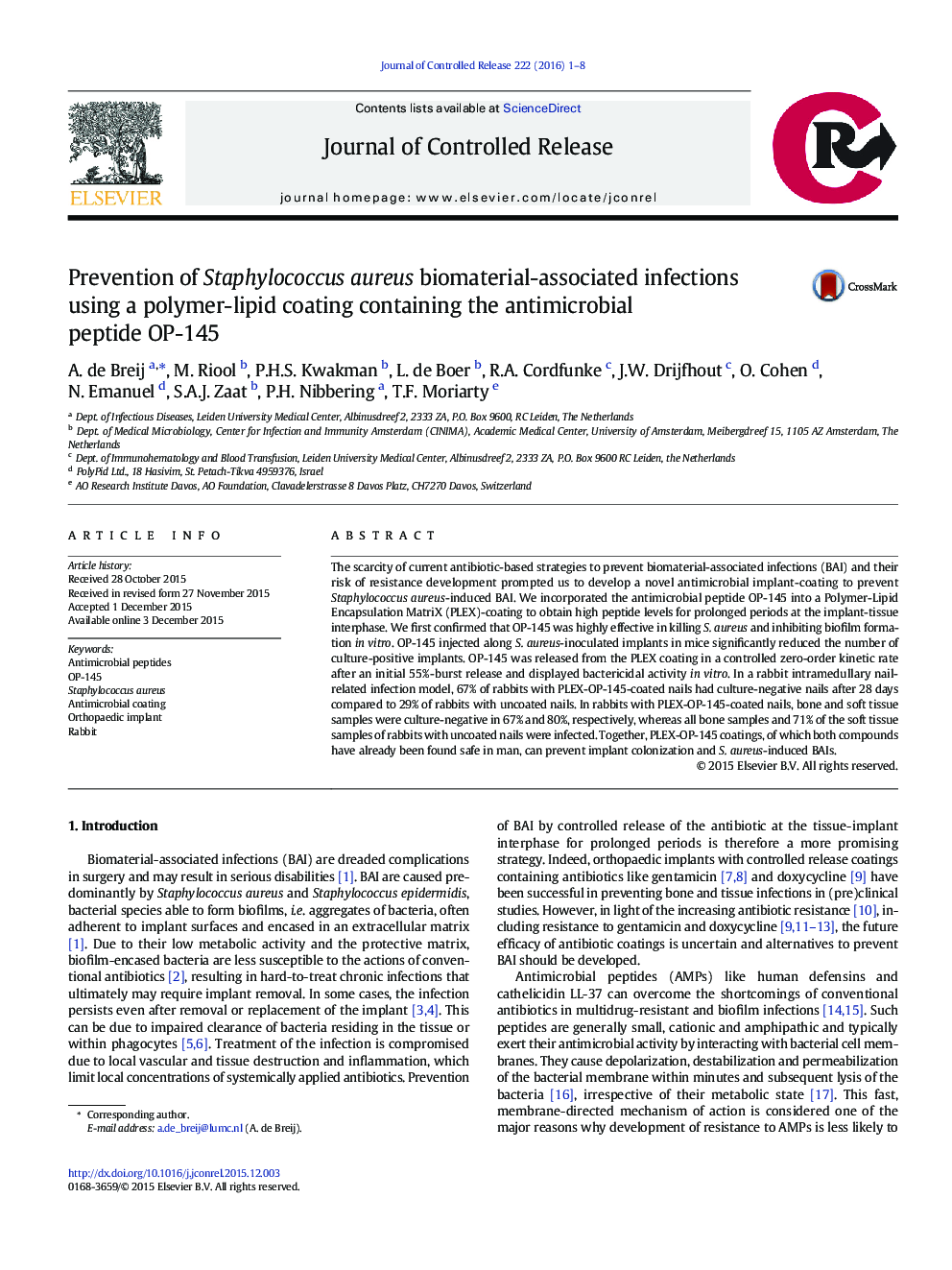| Article ID | Journal | Published Year | Pages | File Type |
|---|---|---|---|---|
| 1423597 | Journal of Controlled Release | 2016 | 8 Pages |
The scarcity of current antibiotic-based strategies to prevent biomaterial-associated infections (BAI) and their risk of resistance development prompted us to develop a novel antimicrobial implant-coating to prevent Staphylococcus aureus-induced BAI. We incorporated the antimicrobial peptide OP-145 into a Polymer-Lipid Encapsulation MatriX (PLEX)-coating to obtain high peptide levels for prolonged periods at the implant-tissue interphase. We first confirmed that OP-145 was highly effective in killing S. aureus and inhibiting biofilm formation in vitro. OP-145 injected along S. aureus-inoculated implants in mice significantly reduced the number of culture-positive implants. OP-145 was released from the PLEX coating in a controlled zero-order kinetic rate after an initial 55%-burst release and displayed bactericidal activity in vitro. In a rabbit intramedullary nail-related infection model, 67% of rabbits with PLEX-OP-145-coated nails had culture-negative nails after 28 days compared to 29% of rabbits with uncoated nails. In rabbits with PLEX-OP-145-coated nails, bone and soft tissue samples were culture-negative in 67% and 80%, respectively, whereas all bone samples and 71% of the soft tissue samples of rabbits with uncoated nails were infected. Together, PLEX-OP-145 coatings, of which both compounds have already been found safe in man, can prevent implant colonization and S. aureus-induced BAIs.
Graphical abstractFigure optionsDownload full-size imageDownload high-quality image (197 K)Download as PowerPoint slide
